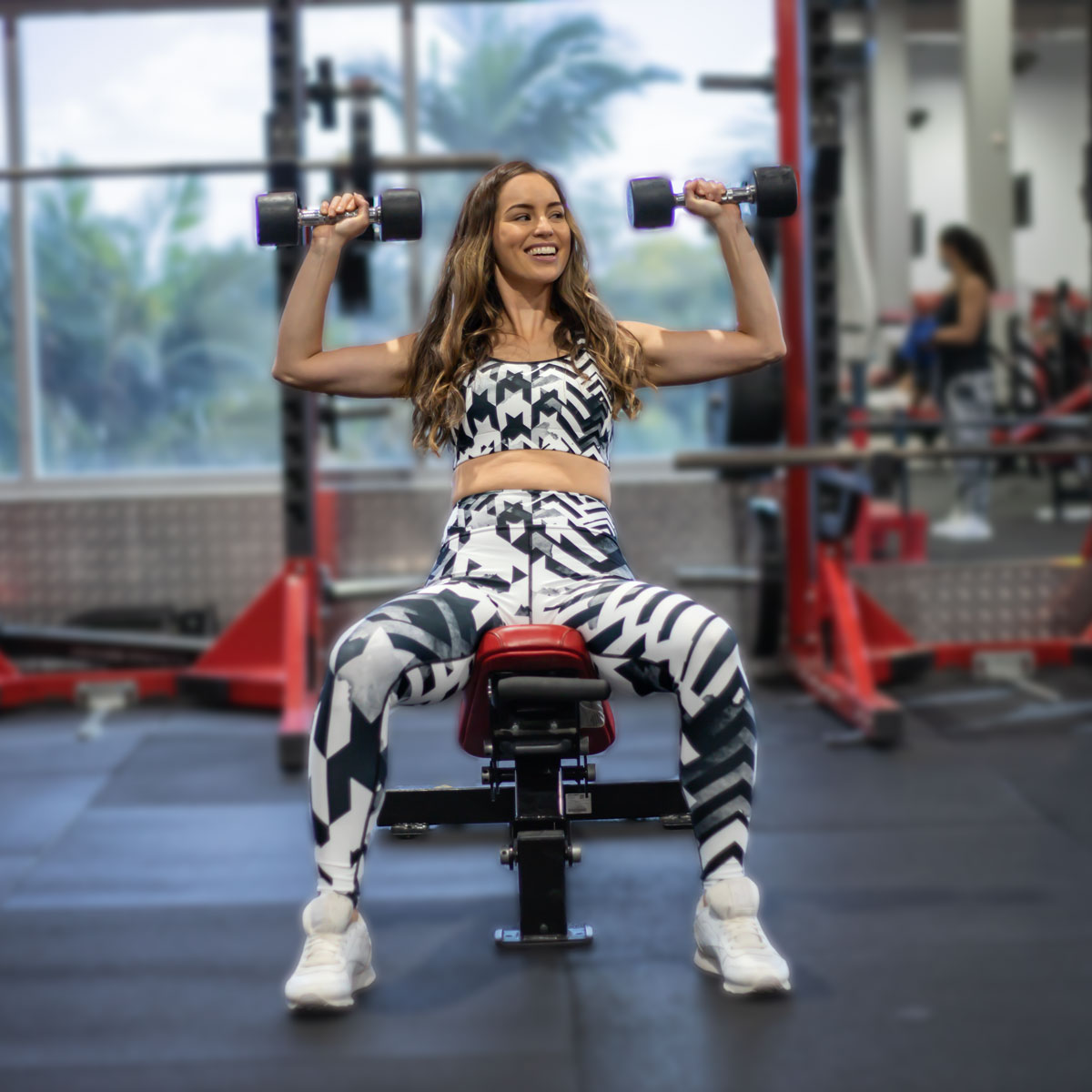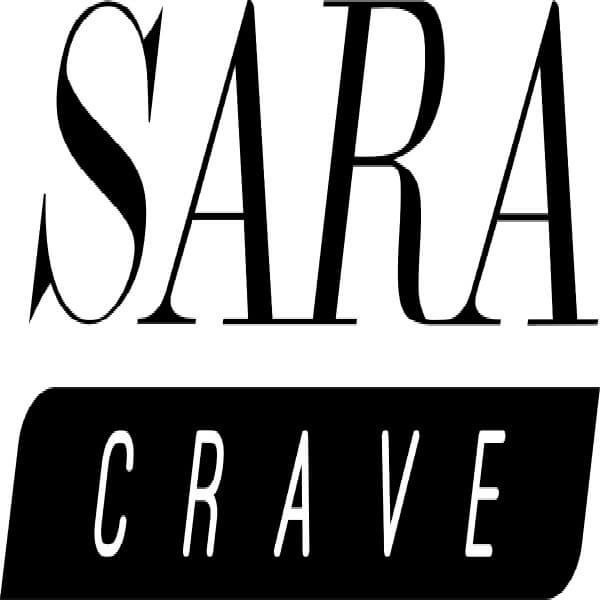According to Wikipedia, progressive overload is "the gradual increase of stress placed upon the body during exercise training. It was developed by Thomas Delorme, M.D. while he rehabilitated soldiers after World War II." Full description hereAnd, principles of strength training; "involve a manipulation of the number of repetitions (reps), sets,
- in Fitness Training by Ana Maria

How To Do Dumbbell Shoulder Press
Are you looking to strengthen your upper body and build muscle? Well, the Dumbbell shoulder press is a great exercise to add to your workout routine. But before you dive in and start any shoulder exercise, it's important to know the proper form and technique to avoid injury.
Let's take the example of Jane, who started doing dumbbell shoulder presses without knowing the correct form. As a result, she experienced pain in her shoulder and had to take a break from working out for weeks. And we all know how much that sucks right!.
To prevent such unpleasant experiences, this guide will provide you with detailed instructions on how to perform the dumbbell shoulder press correctly. Whether you're new to weightlifting or an experienced lifter, following these guidelines can help you maximize your results while minimizing any potential risk of injury during your strength training.
We'll cover everything from common mistakes to variations and tips for getting the most out of this exercise. So grab your dumbbells and let's get started!
Proper Form
So, you probably already know how to royally mess up your back and shoulders while attempting the ol' iron overhead lift - but fear not! Here's the proper way to get those gains without causing injury.
It all starts with shoulder stability. Before starting any weight-bearing exercise, make sure your shoulders are stable enough to handle the load. This can be done through a series of warm-up exercises that focus on scapular movement and rotator cuff activation, to ensure the different muscles in the shoulders are ready for work.
Starting position can be either standing dumbbell shoulder press, where you're standing upright with your arms at 90 degree angle palms are facing forward with a dumbbell in each hand and press the dumbbells overhead, keep your chest up and head looking straight ahead, then slowly lower the dumbbells back to the starting position and repeat for the required number of reps, or seated dumbbell press.
The starting position for seated dumbbell overhead press is, as you'd expect, seated, usually on a bench seat with a back so you can press back into it to prevent arching your lower back which allows you to lift in a safe position. The movement is the same as for the standing version, remembering to keep your shoulder blades pulled back and focus on proper technique including a full range of motion and slowly lower the weights to get better results rather than speed or trying to lift too much weight too quickly.
The breathing technique is also crucial in maintaining proper form during dumbbell shoulder presses. Take a deep breath before beginning each repetition and exhale as you push the weights upward, inhale as you return to the starting position. This will help you brace your core and minimize lower back strain. Additionally, grip variations can be used to target specific areas of the shoulder muscles, address muscle imbalances or provide an added challenge to your workout.
To progress safely and effectively, try incorporating progression techniques into your routine such as increasing weight gradually over time, increasing reps or adding in different types of shoulder presses like incline or decline presses. Remember, building strength takes time and patience so don't rush the process, but always ensure that you are achieving progressive overload.
Now that you understand the importance of proper form, and the basics of the movement, let's move on to common mistakes that people often make during this exercise.
Dumbbells are my new best friend!
Common Mistakes
Bouncing the weight from the bottom position and pressing forward instead of going straight up can lead to pain while overextending and locking your elbows at the top where you'll see people slam the dumbbells together at the top, and shrugging shoulders towards the ears are common dumbbell shoulder press mistakes that should be avoided. Keep your elbows angled towards a 45-degree position, slightly in front of your body. This will help prevent shoulder impingement.
Shrugging shoulders towards the ears is another mistake that many people make during dumbbell shoulder presses. Avoid this by keeping your shoulders down and away from your ears and pull your shoulder blades into your back throughout the movement. Also, don't bounce the weight or press forward instead of vertically. This could cause unnecessary strain on your muscles and joints.
Protect your lower back by being careful not to over arch you back, which can be a common problem particularly with the standard shoulder press in the standing position.
Proper elbow position is crucial for effective dumbbell shoulder press exercises. By keeping them angled at 45 degrees, you'll avoid putting too much pressure on your shoulders and reduce the risk of injury. Remember to keep these tips in mind as we move on to discussing variations next!
Press Variations
Check out these variations for the classic dumbbell shoulder press that will challenge your muscles in new ways and help you achieve better results.
First, try changing up the weights you use. Using heavier weights with lower reps can build more muscle mass while using lighter weights with higher reps can improve endurance and tone and if you alternate these week to week, you will usually find that you make better progress. If you just try to increase the weights you're lifting each week, that might go ok for a while, but you'll pretty quickly reach the stage where it's a real struggle to keep increasing the load, and your technique is pretty much guaranteed to fail at this point as you struggle to perform the exercise with too much weight.
Another way to vary your dumbbell shoulder press is by changing the tempo of the movement. Slow down the eccentric phase (lowering the weight) or pause at the top of the movement to increase time under tension and make your muscles work harder. You can also try incorporating grip variations, such as a neutral grip (palms facing each other) or a wide grip.
Unilateral (one arm at a time) and bilateral (both arms at once) variations are also great options for adding variety to your routine. Unilateral presses can help correct muscular imbalances between sides, while bilateral presses allow for greater overall strength gains.
As you experiment with different variations of dumbbell shoulder press, keep in mind that proper form and technique are still crucial for avoiding injury and achieving maximum results. In fact, varying your routine with these modifications can actually help prevent overuse injuries from doing the same exercise repeatedly.
Keep reading for additional tips on how to make sure you're getting the most out of every rep.
You can't be sad when you're holding a dumbbell
Other Tips
To maximize your gains and prevent injury during the exercise, make sure to follow these additional tips for proper technique.
Pay attention to your arching technique. While it's important to slightly arch your back in order to fully extend your arms, over-arching your lower back can put unnecessary pressure on it. Make sure you find the right balance between arching and keeping your spine safe.
Breathing is key during any exercise and shoulder press is no exception. Inhale as you lower the weight and exhale as you push it up. This will help you maintain control throughout the movement and avoid holding your breath which can cause dizziness or even fainting.
Consider grip variations that work best for you. Some people prefer a neutral grip (palms facing each other) while others opt for a pronated grip (palms facing away from the body). Experiment with different grips to see what feels more comfortable and natural for you.
Lastly, training frequency is another crucial factor in achieving optimal results from dumbbell shoulder presses. Aim for at least 2-3 sessions per week with adequate rest days in between to allow for recovery and muscle repair.
Now that you have some extra tips under your belt, let's move on to discussing the muscles worked during the dumbbell shoulder press. Remember that proper form is crucial not only for preventing injury but also for maximizing strength gains in both concentric and eccentric phases of this movement.
Muscles Worked
What are the muscles that get a workout during this upper-body exercise? The dumbbell shoulder press primarily targets the front deltoids or the anterior fibres of your shoulders. Additionally, it engages your triceps and upper pectoral muscles to a certain extent. It's important to note that while these are the primary muscles worked, other muscle groups such as the rotator cuffs and upper back muscles also play a supporting role in stabilizing your shoulders during the movement.
To maximize muscle growth and strength gains, it's critical to incorporate progressive overload into your training regimen. This means gradually increasing the weight or resistance used over time to challenge your muscles in new ways. However, it's equally important to warm up properly before each workout session to prevent injury and optimize performance.
A dynamic warm-up consisting of movements like arm circles, band pull-aparts, and lightweight shoulder presses can help increase blood flow and activate key muscle groups.
Now that you know which muscles are targeted by this exercise along with some tips on how to improve performance, let's move on to discussing its benefits without further ado!
Benefits of the Dumbbell Shoulder Press
Maximizing strength and muscle gains while minimizing the risk of injury, the right form and technique of the dumbbell shoulder press provide numerous benefits. Here are some of the advantages you can get from regularly incorporating this exercise into your fitness routine:
Incorporating dumbbell shoulder press into your workout routine can provide numerous benefits. You should aim to do this exercise at least once a week with proper form and gradually increase your weight over time. But if you're looking for alternatives or want to mix up your routine, incorporate movement like the barbell overhead press that target similar muscles in different ways.
Dumbbell Shoulder Press Variations
If you're looking to mix up your upper body routine, there are other variations of the dumbbell shoulder press that can target similar muscles in different ways. Resistance bands can be used instead of dumbbells for a more controlled movement and added resistance. Using a cable machine allows for constant tension on the muscle throughout the movement, while kettlebells provide an unstable load that challenges stability and balance.
In addition to these equipment variations, there are also different types of presses that work similar muscles. The military press involves standing with feet shoulder-width apart and pressing a barbell overhead, while the push press incorporates leg drive to help lift heavier weights overhead. Each variation has its own benefits and challenges, so it's important to choose one that fits your goals and abilities.
Incorporating these variations into your workout can add variety and challenge your muscles in new ways. Experiment with different equipment and types of presses to find what works best for you. Remember to always prioritize form and technique to prevent injury and maximize results.
Frequently Asked Questions
Faq
Can dumbbell shoulder press be done with one arm at a time?
Should you keep your head straight or look up during the exercise?
How many sets and reps should you do for dumbbell shoulder press?
Is it necessary to warm up before doing dumbbell shoulder press?
Can you do a dumbbell shoulder press if you have a history of shoulder injuries?
Conclusion
Great, you now know how to do a dumbbell shoulder press with proper form and technique! By following the guidelines in this guide, you can avoid pain and injury while building upper body strength and muscle.
But don't stop here - continue to challenge yourself by trying different variations of the exercise and implementing other tips for maximizing your results.
Did you know that according to a detailed study published in the Journal of Strength and Conditioning Research, a standing dumbbell presses may be more beneficial for muscular development of the deltoid muscles than more stable alternatives? This means that by incorporating this exercise into your workout routine, you can see significant improvements in your shoulder strength and appearance.
For a really interesting deed dive into the affects of different variations of this exercise I think the study is a great read, and you'll find it here.
Remember to always listen to your body and adjust the weight or reps as necessary. With dedication and consistency, you can achieve your fitness goals safely and effectively.
Keep pushing yourself towards greatness!





